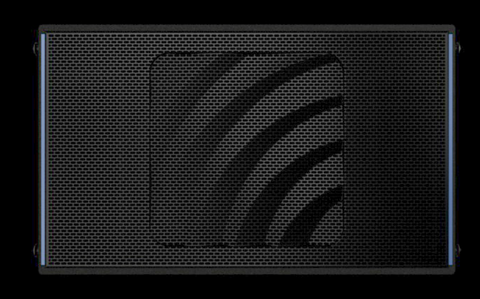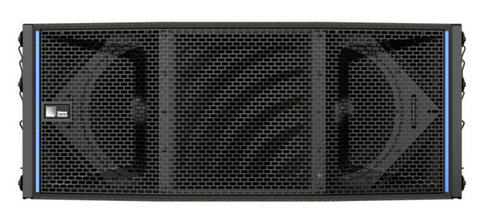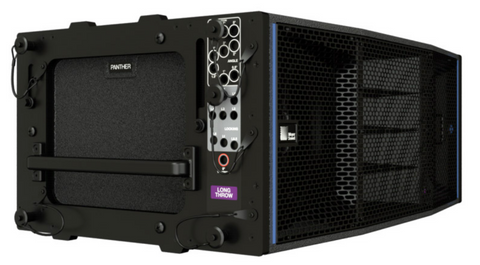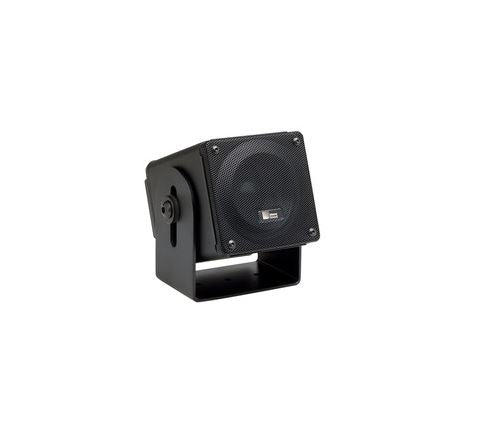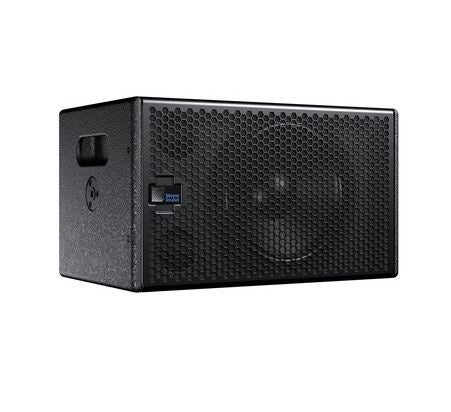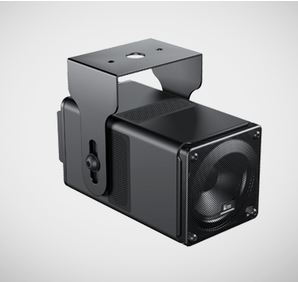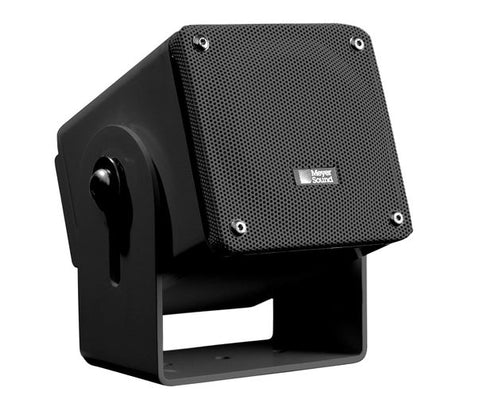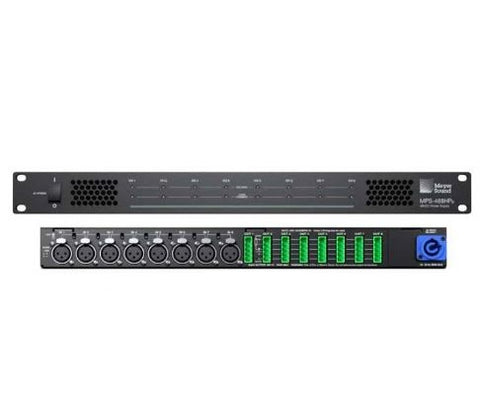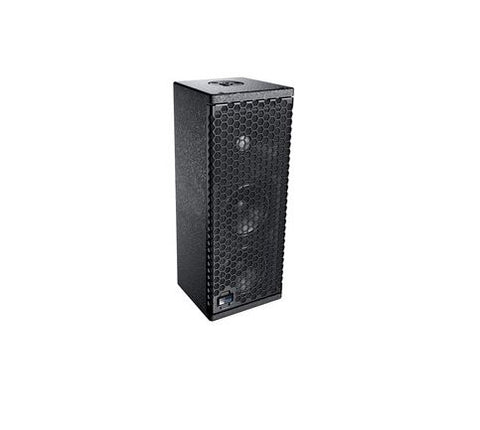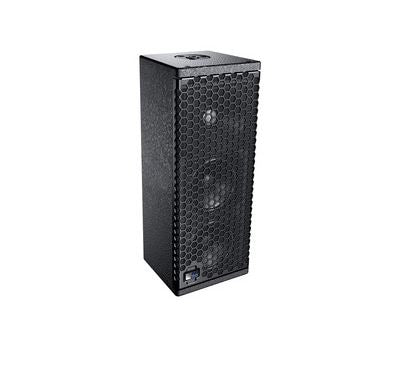Meyer Sound UPQ-D2-3, 15" 2-Way Active Speaker, 3-Pin Input
Vendor: Meyer Sound
Available

Meyer Sound UPQ-D2-3, 15" 2-Way Active Speaker, 3-Pin Input
Meyer Sound UPQ-D2-3 narrow coverage loudspeaker evolves from the UPQ-1P and UPQ-2P product line, now optimized using the advanced amplifier and processing technology that made the LEO® family an award wining product line. Meyer Sound’s award-winning UPQ loudspeakers have been core components in both portable and installed systems for more than a decade. Characterized by a high power-to-size ratio; smooth, uniform coverage; and consistent polar response; these two-way, self-powered loudspeakers are available in three coverage patterns to fit any application, from FOH mains in small-to-midscale systems to fills in large systems.
Predictable performance is key to accurate system design. The UPQ family’s signature Constant Q horn design delivers a consistent beamwidth across a wide frequency range, with gentle, uniform roll-off outside its defined coverage area and ultra-flat amplitude and phase response for tonal accuracy and precise imaging. We've brought the technology from our flagship LEO Family to these stalwarts of our line which are now lighter weight and powered by an all-new built-in 2-channel Class D amplifier with reduced current draw. Count on UPQ loudspeakers to deliver high output with low distortion, thanks to sophisticated DSP that includes limiters, correction filters, phase-corrected processing, and driver-protection circuitry.
UPQ loudspeakers are smooth operators in the field, packed with practical features like Meyer Sound’s Intelligent AC power supply, which adapts to any voltage worldwide and provides soft-turn on and transient protection; and optional RMS monitoring that lets you keep an eye on system stats from a remote PC. Tour-tough enclosures are equipped with convenient attachment points and are compatible with Quickfly rigging options for fast deployment. Weather protection and custom color finishes are also available.
Meyer Sound UPQ-D2-3 Main Features
- A narrow coverage, Constant-Q horn with -6 dB points at 50° x 50° (-10 dB points at 60° x 60°)
- An innovative, newly designed, highly efficient Class D amplifier with reduced current draw that reproduces any sound with linearity over a wide dynamic range
- Optimized frequency and phase response characteristics
- Lightened cabinet weight
- Redesigned cabinet that retains the original size, grille frame, and rigging options of previous UPQ products
- Focused symmetrical pattern affords precise coverage and arrayability in horizontal or vertical clusters
- Highly energy efficient amplifier with sophisticated digital signal processing that provides extraordinarily flat amplitude and phase response for tonal accuracy and precise imaging
- Integral stand mount and QuickFly mounting options facilitate rigging
- Constant-Q horn affords uniform response throughout coverage area
- Exceptional size to power ratio provides application flexibility
- Consistent and predictable performance ensures accurate system design
- Acoustic
- Operating Frequency Range: 55Hz – 18kHz
- Frequency Response: 61Hz – 16.5kHz ±4dB
- Phase Response: 80Hz – 18kHz ±45°
- Linear Peak SPL: 138dB with 19dB crest factor (M-noise), 134.5dB (Pink noise), 137dB (B-noise)
- Coverage
- 50° horizontal x 50° vertical (-6dB)
- 60° horizontal x 60° vertical (-10dB)
- Transducers
- Low Frequency: One high-power 15-inch cone driver with neodymium magnet; 2Ω nominal impedance
- High Frequency: One 4-inch diaphragm compression driver; 8Ω nominal impedance
- Audio Input
- Type: Differential, electronically balanced
- Maximum Common Mode Range: ±15VDC, clamped to earth for voltage transient protection
- Connectors: XLR 3-pin female input with male loop output; optional 5-pin connectors to accommodate both balanced audio and RMS signals
- Input Impedance: 10kΩ differential between pins 2 and 3
- Wiring
- Pin 1: Chassis/earth through 220kΩ, 1000pF, 15V clamp network to provide virtual ground lift at
- audio frequencies
- Pin 2: Signal +
- Pin 3: Signal Case: Earth ground and chassis
- Nominal Input Sensitivity: 0dBV (1.0V rms) continuous is typically the onset of limiting for noise and music
- Input Level Audio: source must be capable of producing of +20dBV (10V rms) into 600Ω to produce the maximum peak SPL over the operating bandwidth of the loudspeaker.
- Amplifier
- Type: Two-channel, Class-D
- Total Output Power: 2250W peak
- THD, IM, TIM: less than 0.02%
- Cooling: Convection
- AC Power
- Connector: PowerCON 20 input with loop output
- Automatic Voltage Selection: 90–265VAC, 50–60Hz
- Safety Agency Rated Voltage Range: 100–240VAC, 50–60Hz
- Turn-on and Turn-off Points: 90VAC turn-on; no turn-off; internal fuse-protection above 265VAC
- Current Draw
- Idle Current: 0.27A rms (115VAC); 0.25A rms (230VAC); 0.29A rms (100VAC)
- Maximum Long-Term Continuous Current (greater than 10 sec): 2.0A rms (115VAC); 1.0A rms (230VAC); 2.3A rms (100VAC)
- Burst Current (less than 1 sec): 3.6A rms (115VAC); 1.8A rms (230VAC); 4.1A rms (100VAC)
- Maximum Instantaneous Peak Current: 7.8A pk (115VAC); 4.0A pk (230VAC); 9.1A pk (100VAC)
- Inrush Current: less than 20A peak
- RMS Network (Optional)
- Equipped with two-conductor twisted-pair network, reporting all operating parameters of amplifiers to system operator’s host computer.
 USD
USD EUR
EUR
 AUD
AUD
 GBP
GBP
 JPY
JPY



